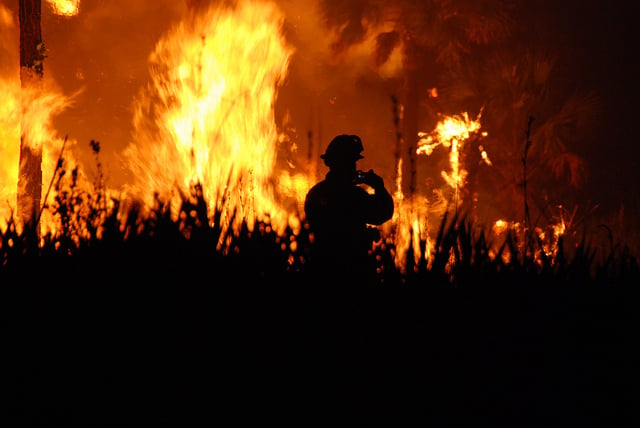
On This Page:
- Importance of Wildfire Safety
- Facts & Information about Wildfires
- Safety Tips & Prevention Resources
- Tips & Resources for Seniors
- Wildfire Safety Tips & Resources for Pets
- Safety Tips & Resources for Kids
- Tips & Resources for People with Disabilities
It’s critically important to know a thing or two about wildfire safety. Why? First, 90 percent of all wildfires are started by humans, whether from arson, careless behavior, or lack of fire safety. Weather factors, such as lightning and drought conditions, also contribute to wildfires. According to National Geographic, more than 100,000 wildfires clear between four and five million acres of land in the U.S. each year – sometimes up to nine million acres in a single year.
While efforts are made to evacuate areas in danger from spreading wildfires, there are some people (and animals) who aren’t as able to get themselves to safety as others. Seniors, children, pets, and people with disabilities often rely on the assistance of good Samaritans and family members to keep them safe from wildfires and other hazards. We’ve put together this comprehensive guide to wildfire safety to provide you with the information you need to keep all those you hold dear safe and sound should you ever find your family, your home, or your loved ones in danger from a wildfire.
The Importance of Wildfire Safety
Whether you accidentally start a wildfire, are with another individual who inadvertently (or intentionally) starts a wildfire, or you happen to be in the wrong place at the wrong time, getting caught in a wildfire is nothing to take lightly. According to an article in The New York Times, 74 people died fighting wildfires between 2008 and 2012 – and that’s just firefighters. In June 2013, 19 firefighters lost their lives fighting a wildfire in Prescott, Arizona.
Wildfires not only take lives and clear millions of acres of land each year, but they destroy homes, too – hundreds of them, in fact. A Colorado fire in June 2012 destroyed 244,000 acres and 600 homes alone, marking the worst year for wildfires in Colorado’s history.
Understanding what contributes to wildfires, knowing the role you can play in preventing them, and arming yourself with the knowledge you need to keep yourself, your children, senior loved ones, and even your pets safe in the event of a wildfire isn’t just essential for those who live in wildfire-prone areas, but for everyone. You never know when your family or your home will be in the wrong place at the wrong time.
Facts and Information About Wildfires
The following resources provide useful facts and statistics about wildfires, such as information on the causes of wildfires, the prevalence of wildfires, and other helpful information.
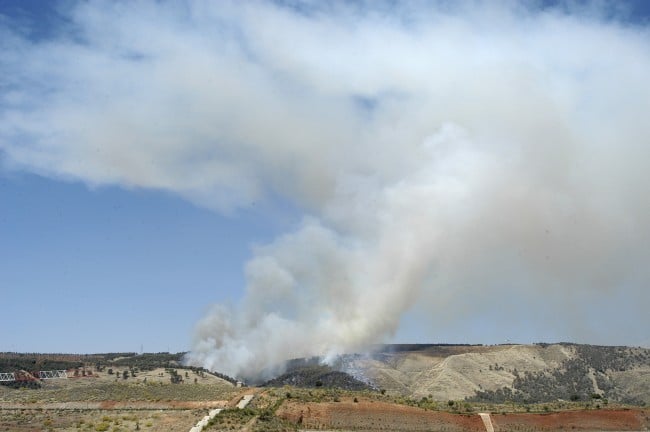
A wildfire moves at speeds up to 14 miles per hour, clearing everything in its path, including homes, trees, wildlife, and even human life. This article from National Geographic outlines the devastating destruction left in the wake of wildfires. National Geographic also points out that four out of five wildfires are started by people – although Mother Nature “is usually more than happy to help fan the flames.”
Megafires – wildfires consuming at least 100,000 acres – are becoming increasingly common. As this resource points out, there have been more megafires annually in the last 10 years, often exceeding 10 megafires in a year. However, prior to 1995, there was an average of less than one megafire per year.
It’s estimated that 90 percent of wildfires in the U.S. are caused by people. These fires may be caused by campfires which are left unattended, the burning of debris, irresponsible discarding of cigarettes, or intentional acts of arson. This resource also notes that between January 1, 2015 and July 6, 2015, more than 29,000 wildfires have occurred in the U.S., burning more than three million acres.
Total suppression costs exceeded $1.5 billion in 2014, a slight decrease from the more than $1.7 billion spend to suppress wildfires in 2013. However, according to this source, there were over 63,000 wildfires in 2014, compared to more than 47,000 in 2013.
Wildfires are often unintentionally started by careless or uninformed actions by humans. According to SmokeyBear.com, other unintentional causes of wildfires (in addition to those mentioned above), include equipment fires from lawnmowers, ATVs, and power equipment, fireworks, and careless discarding of fireplace or barbeque ashes.
General Wildfire Safety Tips and Prevention Resources
The following tips and resources offer information on general wildfire safety, including helpful information on preparing your home if you live in an area prone to wildfires.

Image by U.S. Department of Agriculture
Know your risk. Do you reside in a wildfire-prone area? How often do wildfires occur in your area, and when is the risk the greatest? Ask these questions to evaluate the risk that exists near your home and take appropriate precautions. For example, the American Red Cross points out that droughts and other dry conditions throughout the year contribute to the likelihood of wildfires occurring and also make it easier for wildfires to spread quickly once they’ve started. Additionally, wildfires often start unnoticed, but they can spread very quickly – and every second counts.
More and more people live in areas where wildfires pose a very real risk. As the National Fire Protection Association (NFPA) points out, wildfires are not isolated occurrences that few people must be concerned about, and arming yourself and your family with the tools and information necessary to stay safe should you find yourself in danger from a wildfire is the best way to ensure your family’s safety.
Clear leaves and other debris from areas in and around your home, such as gutters, eaves, porches, and decks. The $50 to $700 cost to clean up yard waste is well worth the price to protect your house. “This prevents embers from igniting your home,” according to the NFPA. Likewise, clear out dead vegetation and other items from under your porch or deck, as well as within 10 feet of your home. Find a yard waste removal specialist near you to make sure your home is protected.
Use the Zone Concept to limit the amount of flammable materials around your home using Firewise landscaping tips. “The primary goal for Firewise landscaping is fuel reduction — limiting the amount of flammable vegetation and materials surrounding the home and increasing the moisture content of remaining vegetation. The home itself and everything around it up to 100 – 200 feet is known as the ‘home ignition zone.’ In areas across the country where the risk of wildfire is high, the home ignition zone extends up to 200 feet beyond the actual home structure.” Removing trees and other fuel ladders from the ignition zone can help save your home in a wildfire.
Harden your home. The use of fire-resistant building materials is recommended for people building or remodeling homes in wildfire-prone areas, such as parts of California. This resource outlines the best materials and building practices for hardening your home and giving it the best possible chance of surviving a wildfire. Hire a siding contractor who specializes in fire resistant materials to harden your home against fires.
Wildfire Safety Tips and Resources for Seniors
The following tips and resources provide helpful information on wildfire safety for seniors, including tips for avoiding respiratory complications resulting from exposure to smoke, preparing for safe evacuation, and additional information.
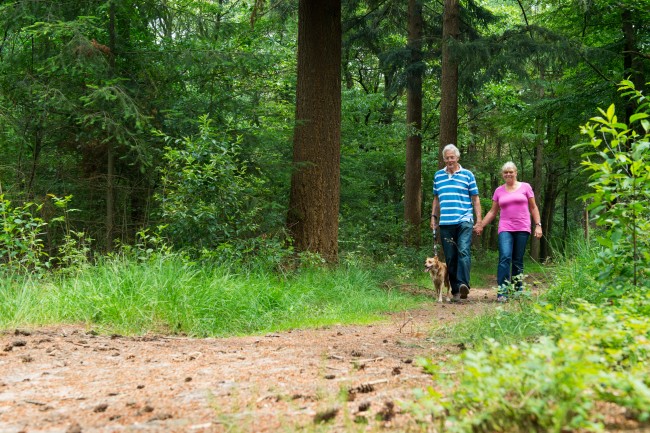
Conduct a self-assessment to adequately prepare for your needs. The Centers for Disease Control and Prevention offer preparedness tips for seniors in the event of an emergency or natural disaster, including asking yourself if you tire easily, whether someone else depends on you for care (meaning they would require your help to evacuate safely), if you need help to see, hear, or walk, and if you take medication daily. This self-assessment will help you plan for worst-case scenarios so that you can safely escape in the event of a wildfire.
Limit outdoor activities when the air quality is reduced from nearby wildfires. As Adeste In-Home Care advises, “Senior citizens should limit their activities, especially outdoor activities, when the outdoor air quality is reduced. By limiting their activities, they will reduce the amount of smoke-filled air that their body breathes in.”
Keep a close eye on news reports and have a prepared evacuation plan. “This plan should include ensuring that all medicines and insurance papers are easily located and can be removed quickly if the need arises. In addition, there may be certain items that have a great deal of sentimental value to the older adult in your life. Discuss this ahead of time, so those items can be taken with you,” recommends Griswold Home Care.
Have a plan for keeping medications cool. “Keep your refrigerated medications cool when the electricity is out by taking frozen items out of your freezer and putting them in an ice chest with your medications,” suggests the Arizona Department of Economic Security.
Make sure family caregivers or in-home care providers are trained on the proper procedures to follow in case of emergency or natural disaster, such as a wildfire. The Arizona Department of Economic Security provides this useful Disaster/Emergency Management Plan for seniors.
Download the “Fire-Safe Seniors” program toolkit. This useful resource from FEMA helps you plan and implement fire safety interventions for high-risk older adults.
Have access to emergency exits. Seniors are identified as an at-risk population, and as Lyons Fire Prevention District points out, having easy access to emergency exits and establishing a pre-planned evacuation route can make escaping the dangers presented by a wildfire easier for seniors.
Consult with a doctor before buying or using a mask. According to the Santa Barbara County Air Pollution Control District, “Masks and respirators can provide a false sense of security, and are also not recommended for people who already have lung problems as masks can restrict airflow. Masks will also not be effective if they are not the proper kind and are not properly worn. Find more information at the CDC.”
Wildfire Safety Tips and Resources for Pets
The following tips and resources provide valuable information on how to keep your pets safe in the event of a wildfire.
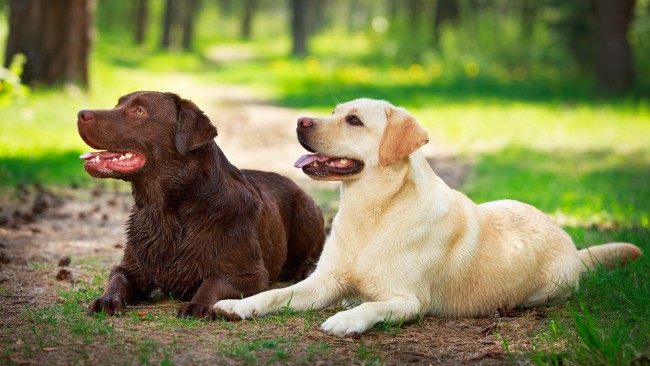
Your family emergency plan should include all members of your family, even those with four legs and fur. The American Red Cross offers tips for including your pets in your family emergency plan, including establishing a safe place to take your pets in the event of an emergency, such as a wildfire.
Pack a supply of canned pet food in your family emergency kit. This resource from the ASPCA suggests having a supply of canned food to cover three to seven days.
Make sure your pets have proper identification. A collar and identification tag with current information will help to ensure that your pets are reunited with you should you become separated during an emergency, such as a wildfire, as often occurs.
Create a mutual pet-buddy system. “Provide a set of house keys to a trusted neighbor who is willing to rescue your pets in case a wildfire strikes when you are not at home. And promise to do the same for their pets.” This article also provides a number of additional tips for keeping pets safe in the event of a wildfire, such as keeping three pet emergency kits: one in your car, one near the front door, and one near the back door.
Keep a close eye on your pets during evacuation procedures and when wildfires are nearby to watch for reactions to any smoke. Just in Case Arizona offers a number of valuable tips for evacuating safety in the event of a wildfire, including tips for evacuating with your pets.
Don’t leave your pets behind when you evacuate, and do not leave them unattended in a vehicle. This resource also suggests having pet carriers large enough for your pet to stand up, turn around, and lie down, as they may need to be inside a carrier for hours at a time.
Wildfire Safety Tips and Resources for Kids
The following resources and tips provide helpful information on wildfire safety for children, including establishing and practicing an escape plan, knowing when to evacuate, and more.
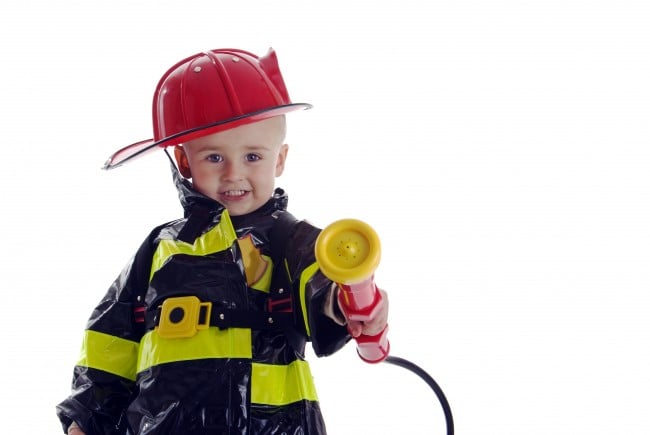
Build an emergency kit and establish a family communications plan. This helps protect your family, your children especially, in the event of a wildfire by allowing all family members to communicate and escape safely from danger. Ready.gov offers specific resources on building an emergency kit and creating a family communications plan.
Never leave a campfire unattended. Camping is a popular activity for families with children, but it’s important to take precautions to prevent wildfires when you’re out in the wilderness. Douse your campfire with water and continue stirring the ashes until cold, before leaving your campsite or sleeping.
Have an escape plan. This includes having a specific plan for waking babies and toddlers who are unable to escape by themselves, and pre-determining two established escape routes from every room in your home.
Keep children a minimum of three feet away from heat sources. As this flyer notes, children are often curious about fire. When camping or even within your home, make an effort to keep young children at least three feet away from any source of heat or flames.
Teach children not to play with matches, lighters, candles, and similar items. It’s far too easy for children to inadvertently start a wildfire when playing with these types of items, according to Ready.gov, which offers additional tips for children related to wildfire prevention and safety.
Listen to emergency officials. If they warn that evacuation may be necessary, begin preparing immediately, and always evacuate when officials recommend doing so – even if it’s not mandatory.
Learn about the evacuation and safety plans at your child’s school or daycare. In the event of an emergency evacuation, you’ll want to be reunited with your children as soon as possible. Know where the safe destination is if your child’s school or daycare must evacuate and where you should pick your children up in the event of a wildfire or other emergency.
Educate your children about wildfire safety. There’s no such thing as being too prepared for a wildfire or other natural disaster. SmokeyBear.com is a great starting point for teaching kids about fire safety, wildfire prevention, and more. The National Fire Protection Association offers free videos on wildfire safety for children, and TreeRemoval.com offers a useful educational guide for children, A Kid’s Guide to Forest Fires.
Watch for emotional responses in the aftermath of a wildfire. A wildfire causing your family to be displaced from your home is a stressful upheaval in a child’s life. While parents try to make evacuation and subsequent recovery as seamless and stress-free as possible, you should keep a watchful eye on your children to watch for signs of post-traumatic stress, such as increased anxiety, disruption in sleep or eating patterns, and other warning signs.
Wildfire Safety Tips and Resources for People with Disabilities
The following tips and resources offer useful information on wildfire safety for people with disabilities, including preparing ahead for accessible shelter options, having an emergency evacuation and communication plan, and more.
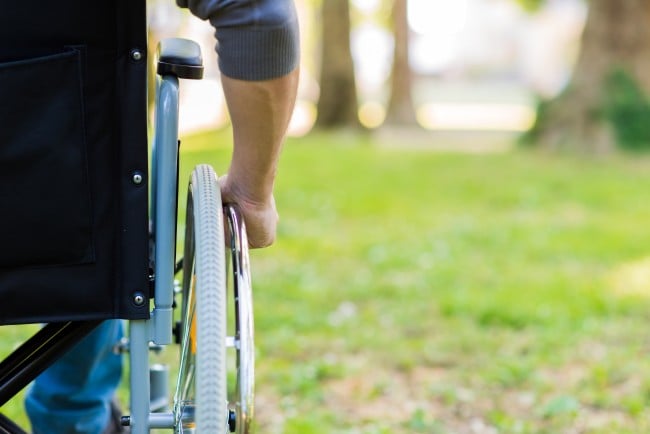
Practice emergency evacuation and communication plans. For people with disabilities, evacuating may mean getting someone’s assistance to escape with a wheelchair, oxygen, or other medical equipment, so it’s important to practice your escape plan to ensure that you can reach a designated safe place within a short time.
Look into special needs sheltering ahead of time. “If you are medically dependent on electricity, need transportation to evacuate, or assistance to maintain health due to disability, it is important that you research your county’s Special Needs Registry.” While this particular resource lists county-by-county special needs registries and sheltering information for Florida, anyone with a disability should research and register for special needs services in their local area – before an emergency occurs, even in areas where natural disasters such as wildfires are less likely to occur.
For more information on special needs shelters, see this toolkit from the Medical Reserve Corps or visit the U.S. Department for Housing and Urban Development for information on emergency shelter and other services.
ADA.gov points out that equal access requires advance planning. Visit this resource for more information on ensuring your loved ones with disabilities have access to suitable services and accommodations in the event of a wildfire or other emergency. “The Americans with Disabilities Act (ADA) generally requires shelters to provide equal access to the many benefits that shelters provide, including safety, food, services, comfort, information, a place to sleep until it is safe to return home, and the support and assistance of family, friends, and neighbors.”
Wear protective clothing if you must go outdoors or evacuate in the event of a wildfire. While this is an important tip for everyone, it’s especially critical for people with disabilities who may have impaired immune systems, making it more difficult to recover from illness or injury, weakened respiratory function, or other conditions that make exposure to smoke, heat, and even flames even more dangerous.
Form a personal support network. If you live alone and have a disability, it’s especially important to make sure that you have easy access to contact information for friends and family with whom you can stay temporarily in the event that you are displaced from your home due to a wildfire, or those who can reach you quickly and easily to assist you in the event of an emergency. FloridaDisaster.org recommends, “Be sure to give at least one trusted member of your support network a key to your house or apartment. Also, let members of your support group know where you store your emergency kit. Most importantly, you should not rely on just one person, but have at least three or more people you can call on for help.”
Keep your emergency kit up-to-date, and label your equipment (such as wheelchairs, walkers, etc.) with your name and phone number so that if you lose belongings during evacuation, they will be more likely to find their way back to you.
Wildfires present extraordinary danger to people and pets, as they tend to spread swiftly over large areas. Preparing ahead of time for worst-case scenarios with emergency action plans that include all members of your family, and following the tips and recommendations outlined in this guide for when disaster strikes, will help ensure your family’s safety in the event of a wildfire or similar natural disaster.
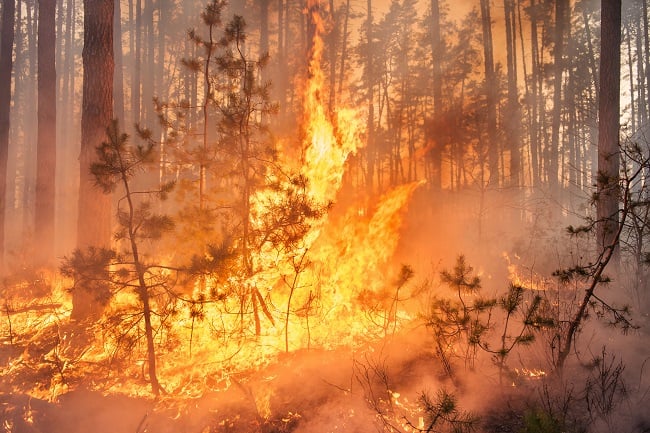
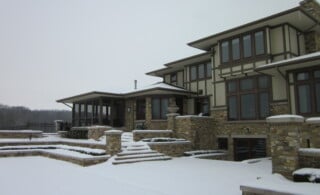 Snow Removal Requests Significantly Increase After Juno Blizzard of 2015
Snow Removal Requests Significantly Increase After Juno Blizzard of 2015 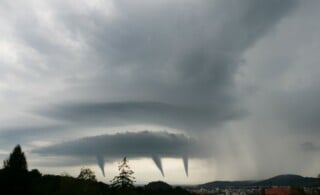 The 20 Deadliest Tornadoes on Record in the US & World
The 20 Deadliest Tornadoes on Record in the US & World 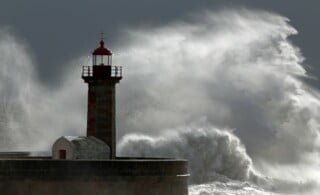 Hurricanes vs Tornadoes vs Cyclones – What’s the Difference?
Hurricanes vs Tornadoes vs Cyclones – What’s the Difference? 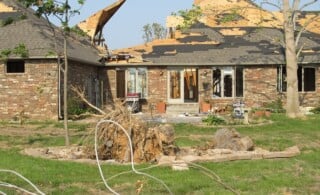 Disaster Restoration Services Provide Shelter from the Storm
Disaster Restoration Services Provide Shelter from the Storm  Storm Shelters Give Respite from The Storm
Storm Shelters Give Respite from The Storm 

Are You Familiar With This Topic? Share Your Experience.